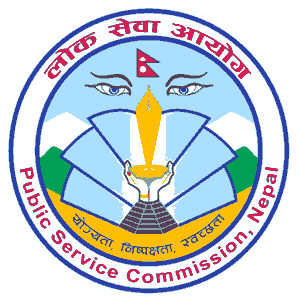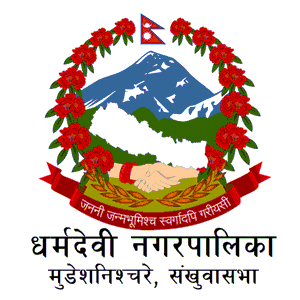Overview
Government of Nepal, Ministry of Education, Science and Technology
Enhanced Vocational Education and Training (EVENT) (Nepali: व्यावसायिक शिक्षा तथा तालिम अभिवृद्धि परियोजना)
Over the four years, the project will directly benefit 1,15,000 young people. Under this, youths will get opportunities for short-term training, technical training at TSLC and diploma level and certification of existing skills. In addition, training providers conducting TSLC and diploma level programs will help certain institutions that meet certain criteria. The project will focus on strengthening the labor market information system and increasing access to employment information. Overall, this project will enhance the competence of the technical education and vocational training sector and help in the production of productive and skilled manpower that can be consumed in national and international labor markets.
Project Components:
Component 1: Strengthening and enhancing the regulatory activities of technical education and vocational training (TEVT);
This component combines the regulatory environment and the availability of institutional resources in the TEVT sector, which are in line with the new proposed policy and must be in line with the current TEVT policy (2007). The expenses under this component will be based on the payment results and each activity is associated with a specific milestone.
Activities under: (a) CTEVT capacity enhancement (b) Implementation of activities related to National Skill Testing Board (NSTB) (c) Training of 5000 New Skill Test Assessors and 350 new skill-testing managers (d) 1500 Trainers and 100 main trainers.
Component 2: Strengthening of technical education:
This component emphasizes the strengthening of TSLC and diploma level technical education provided by CTEVT affiliated institutions, affiliated institutions, community colleges, and annex programs. Both community and private organizations may be selected for the support they provide. For this, the project will provide support to select 30 TSLC and Diploma level training providers and 8 Annex programs. All these institutions will be selected on the basis of competition using Eligibility and Criteria for Selection.
This project will provide support to the selected institutions (a) institutional management improvement (b) trainer training in modern pedagogy (c) quality improvement at institutional level (d) upgrading of facilities and minor construction work. Support for these organizations will be provided through the Performance Fund.
Component 3: Support for short-term training and preschool certification work;
Assistance will be given to the level of professional skills gained through this component and the short-term vocational training and informal means.
Assistance in short-term vocational training:
This subcomponent emphasizes the task of stimulating demand for short-term training to prepare young people for the domestic and international labor markets. This component supports short-term training through community and private training providers. The training will be 3750 based on the results. Two types of modality will be provided:
(A) Voucher-based investment mechanism for the training of three urban centers
(B) Outcome-based investment mechanism for a maximum of 25 districts. About 10,000 youths will be trained through voucher-based investment modality and their desired training providers. Everyone can select a training institution from the list of approved training provider organizations based on certain criteria from the project secretariat. The voucher will be paid on an installment basis to the training provider organization, the first installment will start only after the second installment is completed and after the third installment, after 3 months and 6 months, the participant receives employment.
The result-based investment modality has provided training to training providers and also made them responsible for hiring trainees. In this modality, payments to training providers will be the same as investment voucher-based modality. This will also be based on the payment results to the training provider organization, initially, after the completion of the training, and 3 months and 6 months after the participants go into employment.
Pre-learning certification:
Based on this subcomponent, informal skills will be tested and recognized. NSTB will be involved in the skill-testing of 15,000 people throughout the project period. Workers will receive certificates through informally learned skills certification that can be sold in national and international labor markets. This kind of certification will open the way for them to learn more skills by participating in informally trained higher-level skills.
Component 4: Project Management, Monitoring, and Evaluation.
Project management:
A project secretariat has been arranged under the leadership of the project director for project management. The tasks of the Secretariat include (a) project management (b) procurement and financial management (c) safeguards (d) monitoring and evaluation. A technical group has also been arranged to assist the secretariat.
Monitoring and evaluation:
It will be the responsibility of the Project Secretariat to monitor and evaluate. The project will establish a mechanism for reporting all activities and ensuring timely, adequate, complete, accurate information about the investment, process, and return of the project, collecting, analyzing and promoting. The project will provide support to the Labor Department in establishing the labor market information system. The Results Framework will be developed for monitoring and evaluation of the project. This format will include fixed monitoring indicators, baseline, target volume, source of statistics at the time of monitoring, instruments for data collection.
Summary:
Special Targeted Groups: Unemployed youths, especially those from backward areas, women, Dalits, marginalized tribes, people with disabilities.
Main Objectives: To strengthen the technical education and vocational training system in Nepal and to increase the supply of skilled and employable manpower by increasing access to quality training.
Available indicators:
(A) Short-term training in assisted programs, employment rate within 3 and 6 months (b) Enrollment in a TSLC / Diploma course at a supported institution
Components:
(A) strengthening regulatory activities and capacity building of technical education and vocational training (b) strengthening of technical education (c) assistance in short-term training and pre-accreditation work; d) project management, monitoring, and evaluation.





